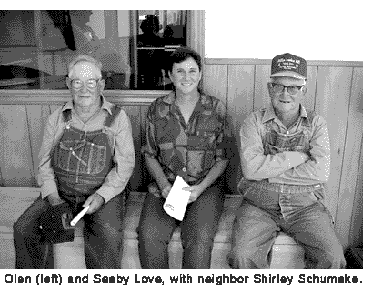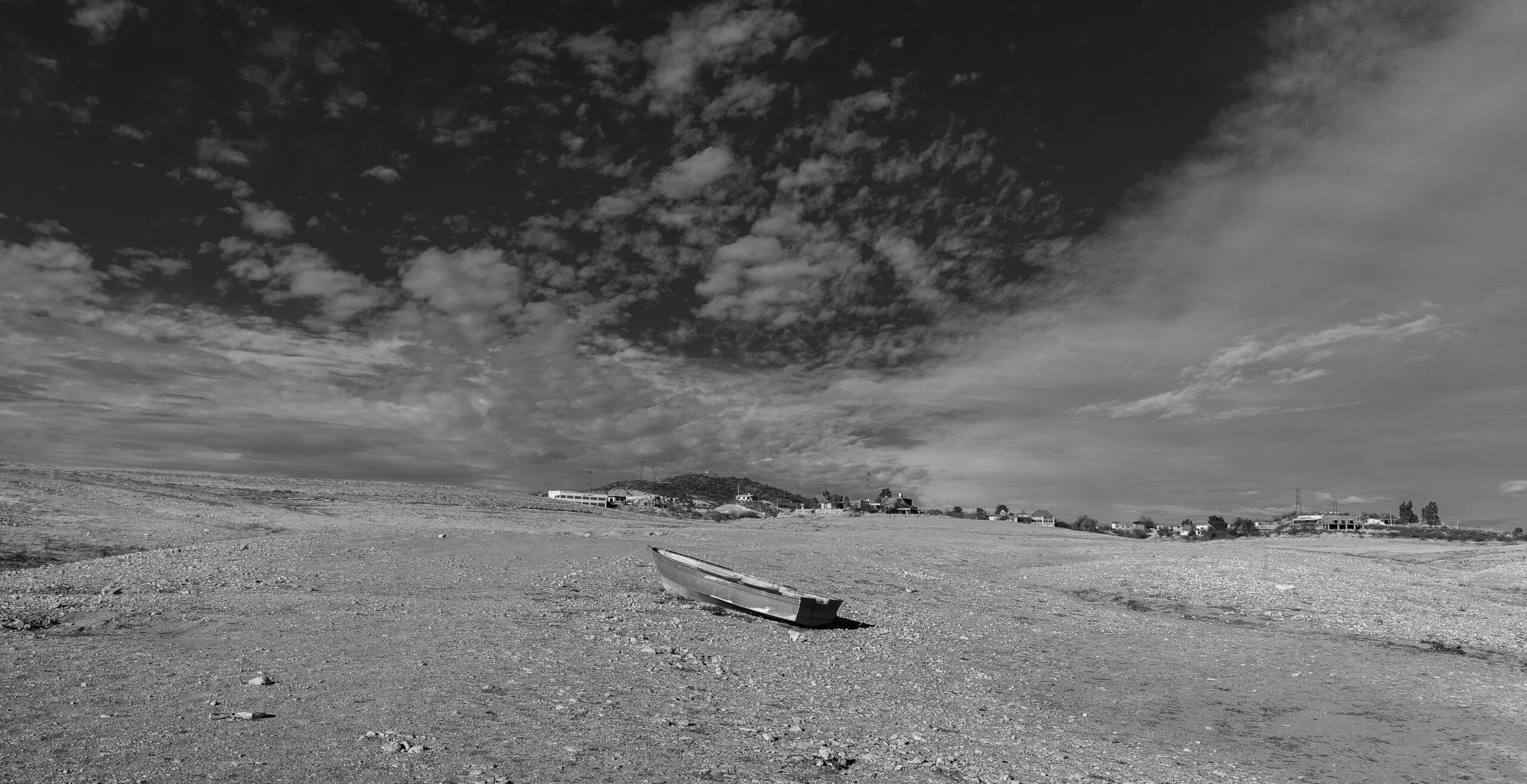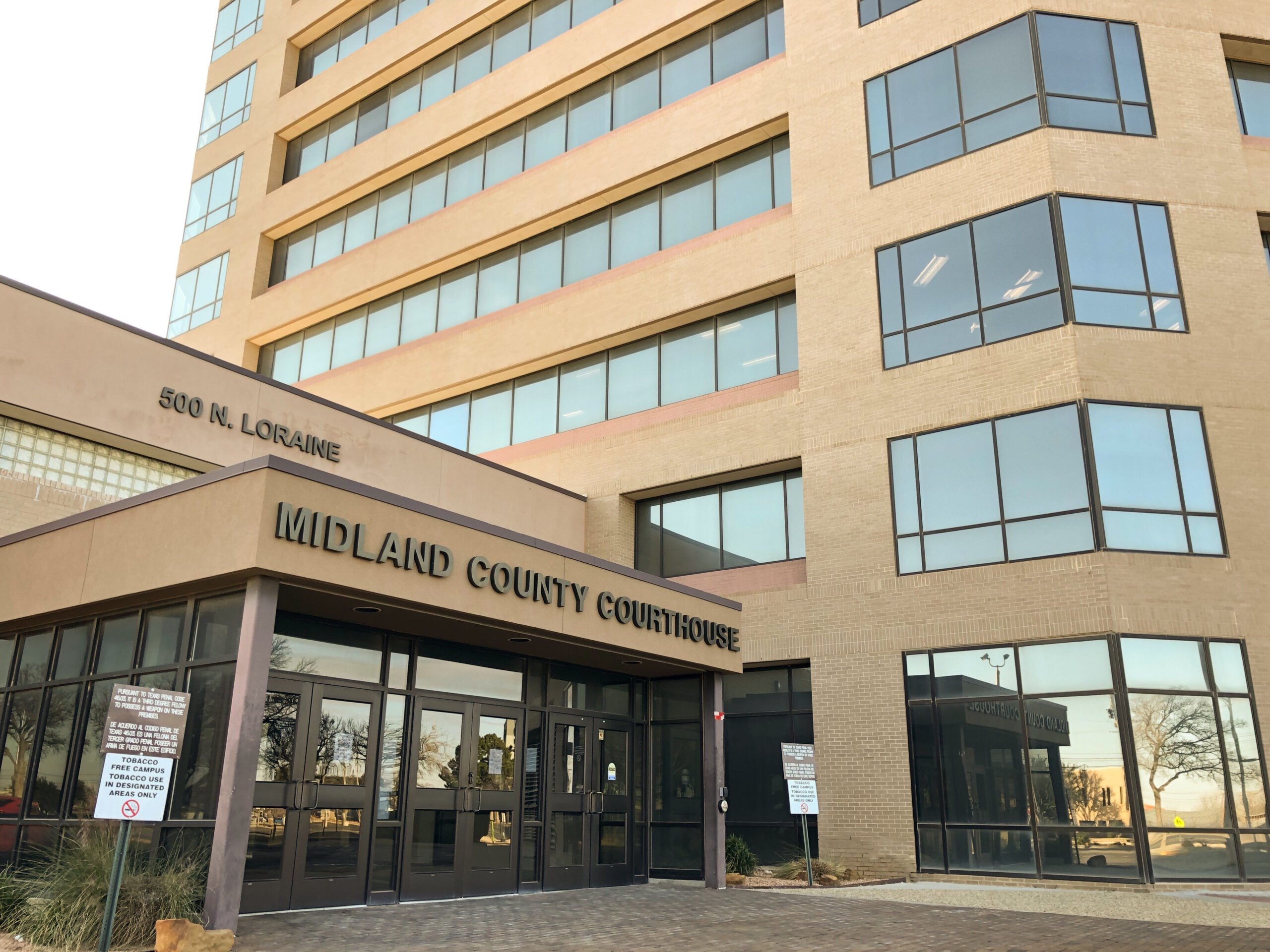Dateline Texas
Drowned by Dallas
In late October, a pair of brothers named Olen and Seaby Love gave me a tour of some of their property on the Sulphur River in Bowie and Red River Counties. Along the length of this river in rural northeast Texas lies some of the state’s last remaining prime bottomland hardwood forest. From its springs in Fannin County, about an hour northeast of Dallas, to Wright Patman Lake just south of Texarkana, the river runs through some of the least populated country in the state. Most of northeast Texas is cotton country, but the bottomlands of the Sulphur flood too often for farming. Those who still live along its length make a living raising hogs and cattle or cutting timber, though few can get by without also taking a job in town.
In the state water plan currently under consideration by the Texas Water Development Board, this portion of the Sulphur would be dammed, and the Loves’ land, along with the holdings of scores of other area families, would be at the bottom of a new 72,000-acre lake. The $1.7 billion project, which planners are calling the Marvin Nichols Reservoir, is the most controversial of several large, capital-intensive projects in the plan. The water, for which there is no current or projected need in northeast Texas, would be pumped to Dallas to meet the long-term water needs of a metropolitan region that is projected to grow by 90 percent over the next 50 years. Critics of the plan point out that Dallas, which already has the highest per capita water use in the state, has no significant conservation plan in place. Even moderate conservation measures, according to figures compiled by the Sierra Club, would make the new reservoir unnecessary and save taxpayers millions of dollars. The scheme is emblematic of a flawed planning process, critics say, in which the state has largely abdicated its responsibility to ensure that the state water plan is financially respons-ible and environmentally sound. Landholders in the bottomlands, meanwhile, feel they have been sold out by planning authorities in their own region and left out of the loop about a decision that will end their way of life.
Both in their seventies and still bachelors, the Love brothers have never lived outside of the Sulphur River basin, nor have they ever lived apart, aside from the four years the older, quieter Olen spent in the Philippines in World War II. With their crisp blue overalls, clean white shirts and battered tennis shoes, the brothers’ opposition to the reservoir has made them minor celebrities in the area, where they have come to symbolize a rural culture that is gradually disappearing. Neither has ever punched a clock or done a day’s work for anyone but themselves. The descendants of homesteaders who came to the area after the Civil War, the brothers have inherited and acquired over 1,000 acres, and the land has always supported them, mainly through cattle grazing.

Few know the river bottoms better than the Love brothers, who can tell a story (many of them ending with a person or a critter being shot) about every bend and hole, whether on their property or another’s. Bumping along through briars and mud puddles in a new Ford Superduty truck with a Depression-era shotgun beneath the seat, Seaby pointed out the various trees native to the bottomlands: sweetgums, hickory, ash, hackberry and blackgum, many of them turned brilliant shades of yellow and orange. State wildlife officials have designated this land as prime habitat for a wide variety of species, including several that are threatened or endangered. When the brothers hunted this land as children, deer had yet to be introduced to the area. The boys trapped raccoons (212 in one record-setting winter) and hunted squirrels, selling the pelts in town and the meat to black families in the area. Riding on horseback, they helped their parents run cattle in pastureland along the river, much of which was free-range at that time. “I could run them seven or eight miles up and down this stretch without hitting a fence,” Seaby said.
For the highlight of our tour, Seaby stopped the truck beside a man-high metal trap set in a muddy clearing. Inside the rusty cage were two feral hogs, the kind which have run wild in the river bottoms since their ancestors escaped in generations past. “I think I caught this un’ here oncet before,” Seaby said, pointing to the larger of the two hogs, a giant–yet alarmingly quick–boar with a hoary, salt-and-pepper-marked hide. It jumped to its feet and let out an explosive bark when Seaby kicked the cage. “Stick your finger in there and see what happens,” he grinned. Though both are still very active, the brothers recently sold a portion of the land because they could not get around to it as often as necessary. If they ever sold the whole ranch, the land would make the brothers wealthy, but they have no desire to do that. “We just want it to be left like it is,” Seaby said.
Marvin Nichols is not a well-known name in northeast Texas, but he is a legend in Dallas. Until his death in 1969, Nichols was a partner in one of the state’s oldest and most influential engineering firms, Freese and Nichols, which counts among its accomplishments the Panama Canal, along with many of the reservoirs built in the state after the drought of the 1950s. Nichols also served on the predecessor of the Texas Water Development Board, and was an early proponent of the project that now bears his name. In the 1980s, Dallas-area water planners hired Freese and Nichols to assess the potential for a new dam on this section of the Sulphur River. Local developers and progress-minded politicians had been dreaming of a dam in the area long before that, at least since the 1960s, according to local memory. Marvin Nichols would require over $28 million worth of concrete alone–that’s a lot of progress for a region with a 10-percent unemployment rate and a moribund economy.
As part of the state-funded water planning process, Freese and Nichols was hired a few years ago to assess the Dallas region’s water needs. Not surprisingly, the report recommends building the Marvin Nichols reservoir, a project on which the firm has already done a good deal of work. “These engineers view the planning process as a way to get their foot in the door,” for potentially enormous contracts, said Norman Johns, who spent years working for a major engineering firm before going to work for the National Wildlife Federation.
That’s one of many faults environmental groups have found with the current round of water planning in Texas. The Marvin Nichols Reservoir is a product of the state’s new “ground-up” water planning process, in which each of the state’s regions submits its own assessment of the area’s projected water needs and how it plans to meet them. The regions received guidance–but little controlling authority–from the Texas Water Development Board, which has traditionally been responsible for drafting the state water plan. As a result, say critics, the regional planning groups, dominated by interests–like utilities, industry, and river authorities–traditionally supportive of major projects, have submitted wish lists of every project they’ve ever dreamed of, including 33 different reservoir sites. The northeast planning group (Region D) alone recommended 15 sites for reservoir development. “It was understood from the start that the idea was to build lakes,” said Richard LeTourneau, who represented environmental interests on the Region D planning group. When Region D’s engineers concluded that the region had no need for a major reservoir for the foreseeable future, the emphasis quickly turned to fulfilling the needs of a region that did, LeTourneau said. That’s where Dallas came into the picture.
Northeast Texas is a water gold mine–the Sulphur River Basin holds over half of the state’s unallocated water–and Dallas has had its eye on the region for years. In fact, northeast Texas water planners had signed a memorandum of understanding with Dallas before the planning process even got underway, agreeing in principle to build the reservoir and send water to Dallas. Members from the two regions began meeting jointly almost from the start, and much of Region D’s planning process became devoted to fulfilling Dallas’s projected need for water.
But that very projection has itself become controversial. “Every other region projects their water use to go down per capita over the next generation,” said Erin Rogers of the Sierra Club. “Dallas is moving in the other direction.” San Antonio, by contrast, has reduced it’s water consumption by 30 percent over the past 13 years, Rogers said. Dallas is ripe for conservation measures. Over half of its daily water use is for watering lawns, and much of that is wasted through inefficient use. The water development board has approved Dallas’s regional plan, though it includes no provision for conservation beyond the baseline savings all areas are expected to achieve through mandatory federal and state plumbing efficiency requirements. The Board’s job, according to Texas Water Development Board planning director Bill Mullican, was simply to ensure that the regional plans complied with the law. In the next round of planning, Mullican told me, the Board would require regional groups to consider conservation. Those who decided against it, he said, would have to explain why “in detail.”
A group of landowners and local environmentalists opposed to the project packed a recent meeting in Mt. Pleasant, where Mullican fielded questions about the state’s water planning process. “I hate going to meetings, and I hate speaking in public,” said Max Schumake, a local landholder and fifth-generation Texan, who has become something of a leader of the opposition. “The only thing I can think of that I might hate worse is knowing that I couldn’t go to the Sulphur bottoms any more.”
Ultimately, the fate of Marvin Nichols will depend in no small measure on an obscure state agency called the Sulphur River Basin Authority. After quietly listening to two hours of public testimony against the reservoir at the Mt. Pleasant meeting, SRBA board chair Mike Huddleston agreed to meet with me in his office in Texarkana the next day. Prior to the controversy over Marvin Nichols, few people in the area had even heard of the agency, which is run by an unpaid board of directors, has no offices, is not listed in the phone book, and until recently, had no staff. Middle-aged, with a round, red face and the humorless intensity of a small businessman, Huddleston runs the SRBA from the offices of Communications Specialists, where he specializes in the sale of Motorola two-way radios. On the wall of his quiet, spacious office in the back of the store is a print of an English fox hunt. On his desk is an Arkansas Razorbacks mug and a sign that reads: “My mind’s made up. Don’t confuse me with the facts!” Huddleston is also the mayor of Wake Village, a small community south of Texarkana, and last November he hired fellow city councilman Mike Burke, a long-time friend and business associate, to administer the authority. If the reservoir is built, it will be largely by the efforts of these two men.
Huddleston, who chaired the regional water planning group, bristled at the suggestion that the work had been done in secret, or that a secret deal had been made with Dallas. Yet Huddleston makes no secret about his conviction that the future for both regions lies in this reservoir. For northeast Texas, it means economic development, he said. “What happens in small rural areas if our children have aspirations to get a good job? Where do they go? My son lives in Houston,” where the jobs are, Huddleston said. There’s no guarantee jobs will follow the lake, he said, but “I don’t know of any industry that will come if we don’t build it.” And the region has a responsibility to the rest of the state, he said. “We do not have the right to cripple the state’s economy or to deny the cities of Texas the right to have the water they need to drink.”
Huddleston had little patience for talk of irresponsible water use in Dallas. “If you listen to the radical environmentalists, they think everything can be done by laws,” he said. “For crying out loud–they want to tell people they can’t water their grass or have swimming pools?” He also scoffed at the numbers that have turned out in opposition at recent meetings. “You have a 100-square-mile reservoir planned and all you can muster is 35 or 50 people against it?” he said. (Asked how many people would be affected by the project, he said simply, “I don’t know.”)
The SRBA has already hired Freese and Nichols as the project engineer for the reservoir, though no money has changed hands, and the contract is still contingent on final approval of the project by the state. As the lead agency behind the dam, the SRBA’s job now will be to build support for the project. Huddleston said the “thousands and thousands” of people who support the dam have yet to be heard from at any public forum. Yet he seems to have his work cut out for him: Two of the area’s major papers, The Texarkana Gazette and The Paris News, have come out strongly against the dam. And Huddleston still seems strangely gun-shy about the project, seemingly uncertain about whether the planning process is over and the promotion phase has begun. Together, Huddleston and Burke have already done dozens of presentations to civic groups around the region, yet Huddleston insisted that in each case, the group contacted him, rather than the other way around. Burke, who sat quietly through most of the interview, was careful to point out that 95 percent of his time was spent on other projects.
Back at his home in the Sulphur bottoms, Seaby Love had nothing good to say about Huddleston. “He sold us out to Dallas and Texarkana,” he said. “We’re just like a dead log lyin’ in the middle.” This might not have happened, Love said, if everybody hadn’t left the bottoms for the city. “Ninety-nine percent are no better off than when they left,” he said. Now a majority of the land is owned by timber companies or other large absentee interests and the politicians don’t come around to visit like they used to, he said.
If the dam does get built, the Loves may not be around to see it. Permitting alone for a project like this can take over a decade; construction much longer. Still, Seaby says he knows how the state’s water wars will end. “They’ll run out of rivers, eventually.”


